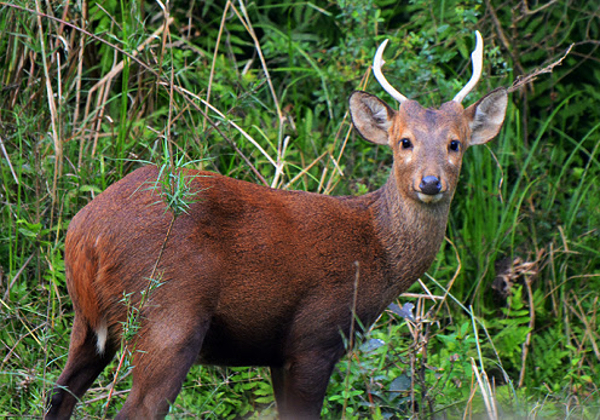ndian scientists have discovered the presence of a sub-species of hog deer, Axis porcinus annamiticus, in India. This endangered sub-species was earlier believed to be confined to the eastern part of central Thailand.
Researchers at Wildlife Institute of India (WII), Dehradun have reported the presence of a small population of hog deer in Keibul Lamjao National Park (KLNP) in Manipur. The population genetically resembles A. p. annamiticus.
The Keibul Lamjao National is considered as a biodiversity hotspot on India-Myanmar border. This study indicates that the western limit of hog deer is Manipur and not central Thailand as believed so far. Since the hog deer is losing its habitat in other countries, the genetically distinct and evolutionarily significant population found in KLNP is significant for conservation of the species.
“The isolated and low population of wildlife species is always a matter of concern as it affects genetic diversity. Reduced genetic diversity decreases adaptability of various species in changing environment, ” explained Dr S K Gupta, lead researcher, speaking to India Science Wire.
Two sub-species of hog deer have been reported from its range. The western race is distributed from Pakistan and the terai grasslands (along the Himalayan foothills, from Punjab to Arunachal Pradesh), while the eastern race of hog deer is found in Thailand, Indo-China, Laos, Cambodia, and Vietnam.
The hog deer or ‘Pada’ is an endangered species in the IUCN Red List and is protected under Schedule I of the Indian Wild Life (Protection) Act, 1972.
Hog deer has lost ground in most of its distribution range. Presently, its small and fragmented population is known to be found in Cambodia. A small and isolated population of under 250 was reported from Cambodia. However, it was widely distributed throughout the Southeast Asian countries at the beginning of the 20th century.
This study has been published in research journal Scientific Reports, and was undertaken based on the grant provided by Science and Engineering Research Board, Wildlife Institute of India and Ministry of Environment, Forest and Climate Change.
Source: FP
Image Courtesy: Project Noah
You may also like
-
New Heat-Based Approach To Cancer Treatment Can Reduce Chemotherapy Doses
-
Scientists Take A Major Step Towards Unification Of Classical & Quantum Gravity
-
India Graphene Engineering and Innovation Centre (IGEIC) Under the Vision of Viksit Bharat@2047 Launched
-
New High-Performance Gas Sensor can Monitor Low Level Nitrogen Oxides Pollution
-
Antidepressant Drug can be Repurposed for Treating Breast Cancer
